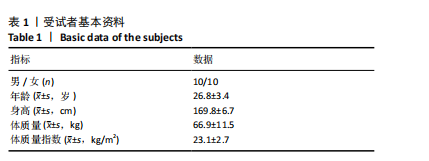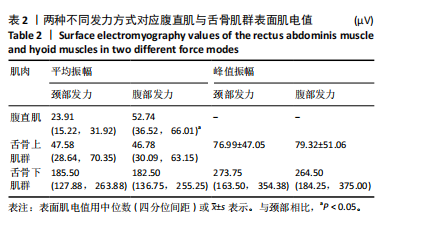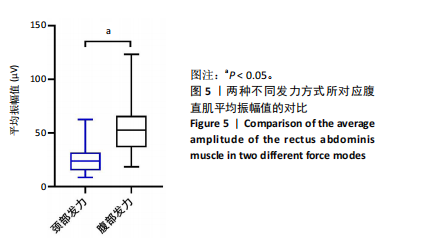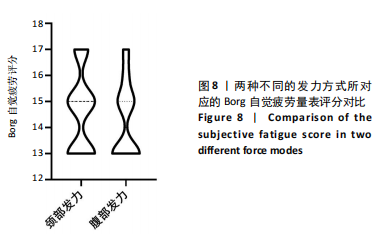[1] RAJATI F, AHMADI N, NAGHIBZADEH ZA, et al. The global prevalence of oropharyngeal dysphagia in different populations: a systematic review and meta-analysis. J Transl Med. 2022;20(1):175.
[2] RIBEIRO M, MIQUILUSSI PA, GONCALVES FM, et al. The prevalence of oropharyngeal dysphagia in adults: a systematic review and meta-analysis. Dysphagia. 2024;39(2):163-176.
[3] FREGATTO LF, COSTA IB, DE BORTOLI TEIXEIRA D, et al. Oral hygiene and oral microbiota in children and young people with neurological impairment and oropharyngeal dysphagia. Sci Rep. 2021;11(1):18090.
[4] YANG S, PARK JW, MIN K, et al. Clinical Practice Guidelines for Oropharyngeal Dysphagia. Ann Rehabil Med. 2023;47(Suppl 1):S1-S26.
[5] DZIEWAS R, MICHOU E, TRAPL-GRUNDSCHOBER M, et al. European Stroke Organisation and European Society for Swallowing Disorders guideline for the diagnosis and treatment of post-stroke dysphagia. Eur Stroke J. 2021;6(3):LXXXIX-CXV.
[6] COSENTINO G, AVENALI M, SCHINDLER A, et al. A multinational consensus on dysphagia in Parkinson’s disease: screening, diagnosis and prognostic value. J Neurol. 2022;269(3):1335-1352.
[7] ALFONSI E, TODISCO M, FRESIA M, et al. Electrokinesiographic study of oropharyngeal swallowing in neurogenic dysphagia. Dysphagia. 2023;38(2):1-15.
[8] ALJULAIH GH, MENEZES RG. Anatomy, head and neck: Hyoid bone//Treasure Island (FL). StatPearls Publishing, 2023.
[9] SEIKEL JA, DRUMRIGHT DG, HUDOCK DJ. Anatomy & physiology for speech, language, and hearing. Plural Publishing, 2023.
[10] RAMASWAMY AT, MARTELL P, AZEVEDO R, et al. The upper esophageal sphincter: anatomy and physiology. Ann Esophagus. 2022;5:30.
[11] MACEDO ALVES MR, OLIVEIRA NETO IC, MAIA ZICA G, et al. Hyoid displacement patterns in healthy swallowing. einstein (São Paulo). 2022;20:eAO6268.
[12] RENGARAJAN A, GYAWALI CP. Functional anatomy and physiology of swallowing and esophageal motility//The Esophagus: Sixth Edition. John Wiley & Sons Ltd, 2021:59-96.
[13] DOELTGEN SH, KAUR H, DANIELS SK, et al. Behavioral Interventions Targeting Insufficient Upper Esophageal Sphincter Opening During Swallowing: A Scoping Review. Dysphagia. 2022;37(4):699-714.
[14] SPEYER R, CORDIER R, SUTT AL, et al. Behavioural Interventions in People with Oropharyngeal Dysphagia: A Systematic Review and Meta-Analysis of Randomised Clinical Trials. J Clin Med. 2022;11(3):685.
[15] LIU J, WANG Q, TIAN J, et al. Effects of chin tuck against resistance exercise on post-stroke dysphagia rehabilitation: A systematic review and meta-analysis. Front Neurol. 2023;13:1109140.
[16] CHANG MC, PARK S, CHO JY, et al. Comparison of three different types of exercises for selective contractions of supra- and infrahyoid muscles. Sci Rep. 2021;11(1):7131.
[17] CHOY J, POURKAZEMI F, ANDERSON C, et al. Dosages of swallowing exercises in stroke rehabilitation: a systematic review. Eur Arch Otorhinolaryngol. 2023;280(3):1017-1045.
[18] 江彦萩, 陈惇杰, 李月丽, 等. 谢克氏运动对脑中风病人在吞咽困难之成效: 系统性回顾暨统合分析[J]. 高雄护理杂志,2021,38(2): 19-30.
[19] SZE WP, YOON WL, ESCOFFIER N, et al. Evaluating the Training Effects of Two Swallowing Rehabilitation Therapies Using Surface Electromyography—Chin Tuck Against Resistance (CTAR) Exercise and the Shaker Exercise. Dysphagia. 2016;31(2):195-205.
[20] EASTERLING C, GRANDE B, KERN M. Attaining and maintaining isometric and isokinetic goals of the Shaker exercise. Dysphagia. 2005;20(2):133-138.
[21] PARK MW, LEE D, SEO HG, et al. Reliability of Suprahyoid and Infrahyoid Electromyographic Measurements during Swallowing in Healthy Subjects. J Korean Dysphagia Soc. 2021;11(2):128-136.
[22] YE-LIN Y, PRATS-BOLUDA G, GALIANO-BOTELLA M, et al. Directed Functional Coordination Analysis of Swallowing Muscles in Healthy and Dysphagic Subjects by Surface Electromyography. Sensors. 2022; 22(12):4513.
[23] WARESHUZZAMAN M, AZHAR MA, RAHMAN MS, et al. Etiological Pattern & Clinical Presentation of Dysphagia. Ibrahim Card Med J. 2022;12(1):40-45.
[24] MCCARTY EB, CHAO TN. Dysphagia and Swallowing Disorders. Med Clin North Am. 2021;105(5):939-954.
[25] ZARETSKY E, PLUSCHINSKI P, SADER R, et al. Identification of the most significant electrode positions in electromyographic evaluation of swallowing-related movements in humans. Eur Arch Otorhinolaryngol. 2017;274(2):989-995.
[26] YAMASHITA M, ISHIDA T, OSUKA S, et al. Trunk Muscle Activities during Ergometer Rowing in Rowers with and without Low Back Pain. J Sports Sci Med. 2023;22(2):338-344.
[27] LEE K. Motion Analysis of Core Stabilization Exercise in Women: Kinematics and Electromyographic Analysis. Sports (Basel). 2023; 11(3):66-76.
[28] JO D, BILODEAU M. Rating of perceived exertion (RPE) in studies of fatigue-induced postural control alterations in healthy adults: Scoping review of quantitative evidence. Gait Posture. 2021;90:167-178.
[29] FARAGO E, MACISAAC D, SUK M, et al. A Review of Techniques for Surface Electromyography Signal Quality Analysis. IEEE Rev Biomed Eng. 2023;16:472-486.
[30] SAGESHIMA H, PAVLŮ D, DVOŘÁČKOVÁ D, et al. Onset Timing of Hyoid Muscles Activation during Cervical Flexion Is Position-Dependent: An EMG Study. Life. 2022;12(7):949.
[31] CLANCY EA, MORIN EL, HAJIAN G, et al. Tutorial. Surface electromyogram (sEMG) amplitude estimation: Best practices. J Electromyogr Kinesiol. 2023;72:102807.
[32] YOON T, KIM K. Effect of craniocervical flexion on muscle activities of abdominal and cervical muscles during abdominal curl-up exercise. Phys Ther Kor. 2013;20(4):32-39.
[33] MARCHESI G, ARENA G, PAREY A, et al. A Strong Core for a Strong Recovery: A Scoping Review of Methods to Improve Trunk Control and Core Stability of People with Different Neurological Conditions. Appl Sci. 2024;14(11):4889.
[34] VAN DE RAKT J, MCCARTHY-GRUNWALD S. Swallowing and the attitude of the neck/body. Ita J Sports Reh Po. 2021;8(17):1745-1783.
[35] YOON WL, KHOO JKP, RICKARD LIOW SJ. Chin tuck against resistance (CTAR): new method for enhancing suprahyoid muscle activity using a Shaker-type exercise. Dysphagia. 2014;29(2):243-248.
[36] MARTINS LG, MOLLE DA COSTA RD, ALVAREZ SARTOR LC, et al. Clinical factors associated with trunk control after stroke: a prospective study. Top Stroke Rehabil. 2021;28(3):181-189.
[37] THOMPSON LA, MELENDEZ RAR, CHEN J. Investigating Biomechanical Postural Control Strategies in Healthy Aging Adults and Survivors of Stroke. Biomechanics. 2024;4(1):153-164.
[38] MOUMENI IN, MAPOURE YN, MOYSE E, et al. Stroke. Early Physiotherapy? What content? Proposal of Physiotherapy content in the acute phase (D1 to D14) part I. Acta Sci Med Sci. 2021;5(5):4-12.
[39] OYANAGI K, KITAI T, YOSHIMURA Y, et al. Effect of early intensive rehabilitation on the clinical outcomes of patients with acute stroke. Geriatr Gerontol Int. 2021;21(8):623-628.
[40] RUBINE-GATINA S, RIMERE N, ZUNDANE Z, et al. Sternocleidomastoid muscle and head position: how to minimize muscle tension. IISE Trans Occup Ergon Hum Factors. 2022;10(4):192-200.
[41] ROMEO A, BACCINI M, CARRERAS G, et al. Reliability, validity, and responsiveness of the Craniocervical flexion test in people who are asymptomatic and patients with nonspecific neck pain: a systematic review and Meta-analysis. Phys Ther. 2022;102(7):pzac054.
[42] MARCELA MENDES B, LIDIANE LF, AMANDA R, et al. Women with migraine presents similar altered performance in the craniocervical flexion test than women with chronic nonspecific neck pain: An observational study. Musculoskelet Sci Pract. 2023;66:102784.
[43] LEE J, HWANG U, KWON O. Relationship between cervical lordotic angle and cervical segmental motion during craniocervical flexion test: A cross-sectional study. Medicine. 2024;103(15):e37830.
[44] KWON O. Comparison of muscle thickness and changing ratio for cervical flexor muscles during the craniocervical flexion test between subjects with and without forward head posture. Phys Ther. 2022; 29(3):180-186.
[45] LIN G, WANG W, WILKINSON T. Changes in deep neck muscle length from the neutral to forward head posture. A cadaveric study using Thiel cadavers. Clin Anat. 2022;35(3):332-339.
[46] TSIRINGAKIS G, DIMITRIADIS Z, TRIANTAFYLLOY E, et al. Motor control training of deep neck flexors with pressure biofeedback improves pain and disability in patients with neck pain: a systematic review and meta-analysis. Musculoskelet Sci Pract. 2020;50:102220.
[47] ABDELKADER NA, MAHMOUD AY, FAYAZ NA, et al. Decreased neck proprioception and postural stability after induced cervical flexor muscles fatigue. J Musculoskelet Neuronal Interact. 2020;20(3):421-428.
[48] SEOK H, LEE S, JUN D. The effect of deep neck flexor endurance on craniovertebral angle changes and neck and shoulder muscle activities during a computer task. Int J Occup Saf Ergon. 2024;30(1):100-107.
|





